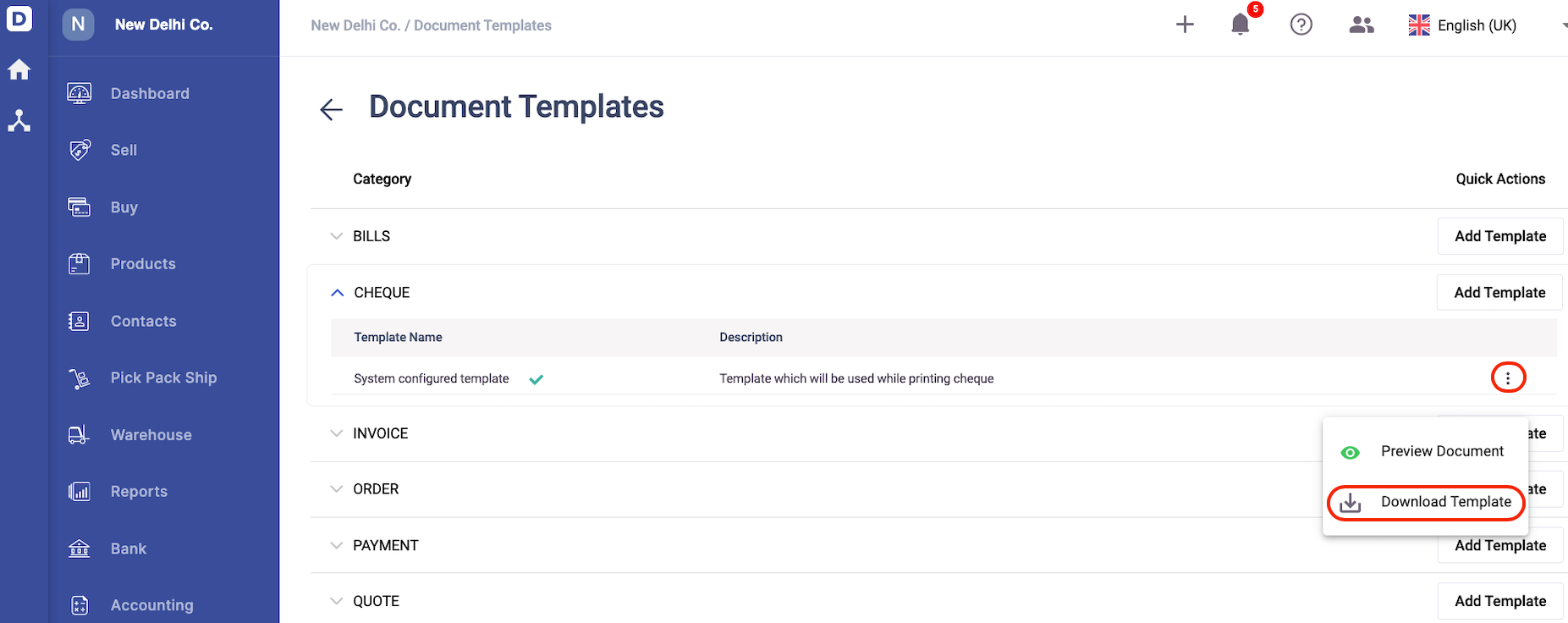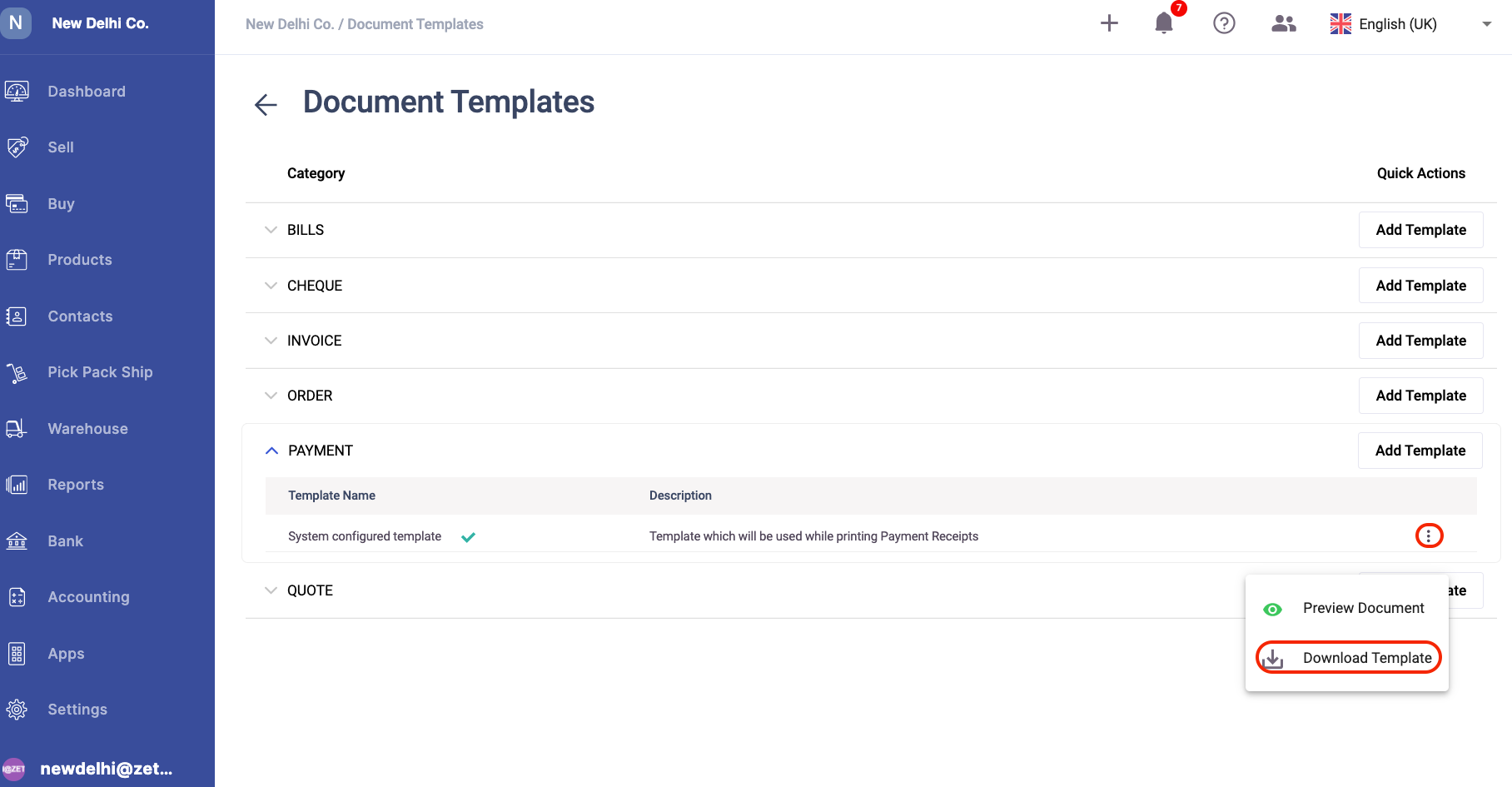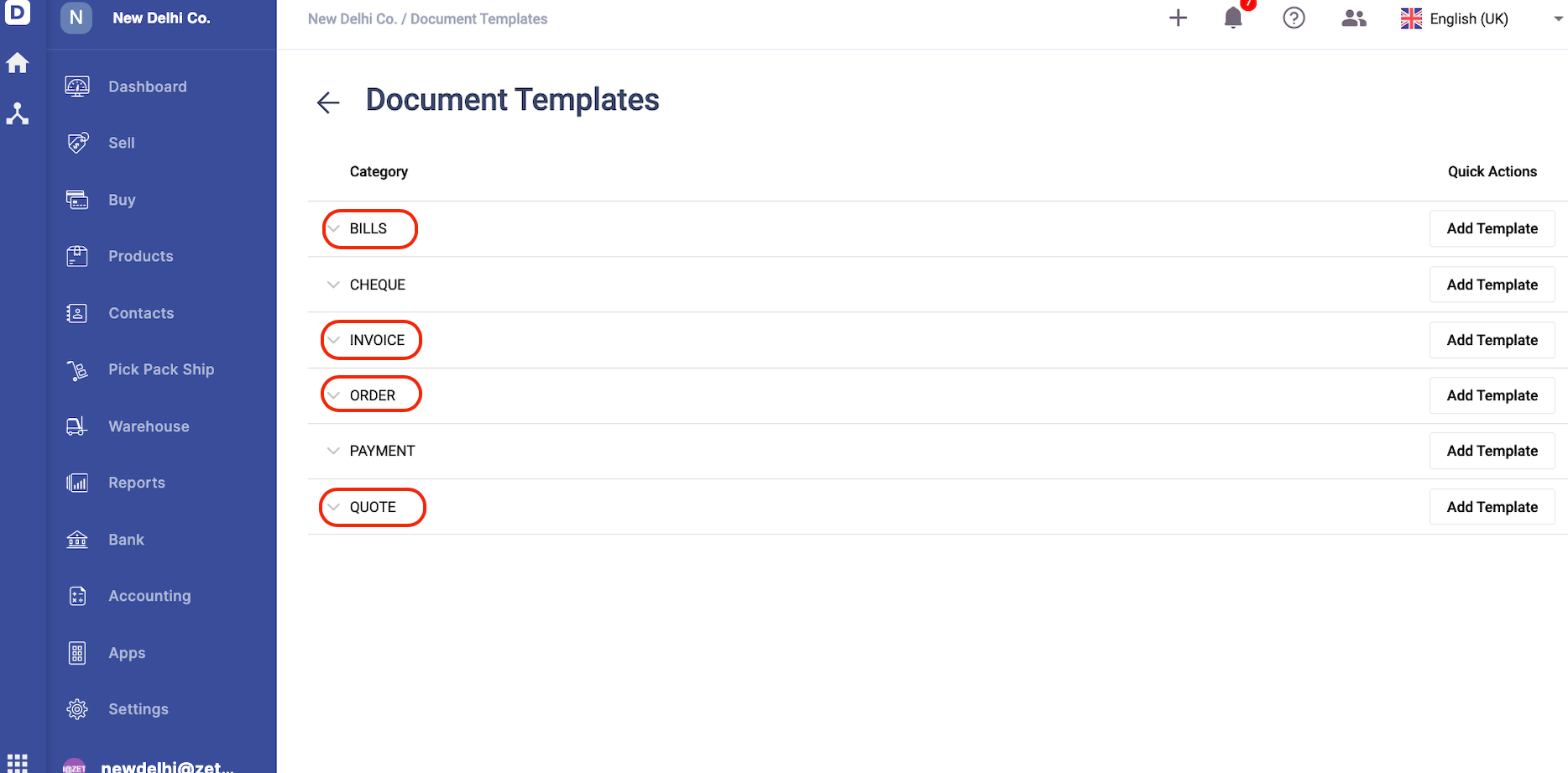If you're using the document templates in Deskera Books, you will have to use the placeholders provided in each template.
You can refer to the article here to guide you on using the document template on Deskera Books.

Reminder: The document template and document generator are two separate modules. Don't be confused!
In this article, we will elaborate further the meaning of the system fields in each template so you can understand better.
Read more below.
Placeholders for cheque

When you have downloaded the cheque template document, you can view the relevant system fields in the cheque document.

You can only use the system fields available here in order for Deskera system to map the data successfully.
Placeholders for payment

Click on the three dots as shown the payment category and click download template.
Here's the available system fields for the payment document.

Placeholders for Quote, Bill, Order, and Invoice

Download the document templates for quote, bill, order, and invoice.
| Custom fields | Meanings |
|---|---|
| «$CompanyName» | Your organization’s name |
| ${Address} | Your organization’s address |
| ${Phone} | Your organization’s contact number |
| «$orderNo» | The order number |
| «$invoiceNumber» | The invoice number |
| «$quotationNumber» | The quotation number |
| «$BillNo» | The bill number |
| «$Date» | The document’s date |
| «$BillToName» | Your contact’s name |
| «$BillToAddr» | Your contact’s shipping address |
| «$ShipToName» | Your contact’s name |
| «$ShipToAddr» | Your contact’s shipping address |
| «$DueDate» | The document’s due date |
| «$Memo» | Description saved in the documents |
| «$items.Name» | Product’s name |
| «$items.Desc» | Product’s description |
| «$items.Quant» | Product’s quantity |
| «$items.unitPrice» | Product’s pricing |
| «$items.Disc» | Discount given to for the line item |
| «$items.Tax» | Tax imposed on the line item |
| «$items.Total» | Total payment of the line item after discount and tax |
| «$SubTotal» | Total payment before tax and discount |
| «$Discount» | The total discount applies to all line items |
| «$BeforeTax» | The total amount of deduction of subtotal from discount |
| «$Tax» | The sum of total tax rate for each line item |
| «$Total» | Total amount of the document |
| «$!RoundingOff» | Any rounding off applies to the document |
| «$TotalBase» | Total amount in base currency |
Additional Placeholders
You can add more placeholders to your quote, bill, oder, and invoice.
Here are the additional system fields below:
Custom Fields | Meanings |
«$contactEmail» | Your contact’s email address |
«$items.sequence» | The product sequence of each line item |
«$items.UOMName» | The product’s UOM |
«$contactCode» | Your contact’s code |
«$PaymentTermName» | The payment term |
«$items.code» | Your product’s sequence number |
«$items.barcode» | The product’s barcode |
<<$items.amountBeforeTax>> | The total of the line item, exclusive tax |
«$exchangeRate» | The exchange rate involved for multi-currency |
«$amountInWords» | The invoice’s total amount in words |
Custom fields | Meanings |
«$!productTrackingInfo.productCode» | Product code for batch and serial number |
«$!productTrackingInfo.productName» | Product name for batch and serial number |
«$!productTrackingInfo.productDesc» | Product description for batch and serial number |
«$!productTrackingInfo.serialBatchNumber» | Product tracking number for batch and serial number |
«$!productTrackingInfo.sequence» | Batch and serial number’s sequence number |
«$!productTrackingInfo.subSequence» | Batch and serial number’s sub sequence number |
«$!productTrackingInfo.expiryDate» | Batch and serial number’s expiry date |
«$!productTrackingInfo.manufacturingDate» | Batch and serial number’s manufacturing date |
«$!productTrackingInfo.quantity» | Batch and serial number’s quantity |
«$!items.serialInfo» | Batch and serial number use on line item |
Custom fields | Meanings |
«$!basReportingMethod» | BAS Reporting Method |
«$!taxFileNumber» | Australian Company Number (ACN) |
«$!australianBusinessNo» | Australian Business Number (ABN) |
Things to Note
- Deskera Books' users can customize their document templates based on the system field that is stated here.
- You can choose to customize the template based on your preferences, as long as the placeholders are used, the data will mapped accordingly.
- Do note that if you create your own system fields, our system won't be able to recognize the placeholders as we do not have the respective field at our backend library.
- If you couldn't find any system fields that suits you, you can always configure the system field using the custom field option.
Read more here on how to configure the system field by creating custom field in document designer.


